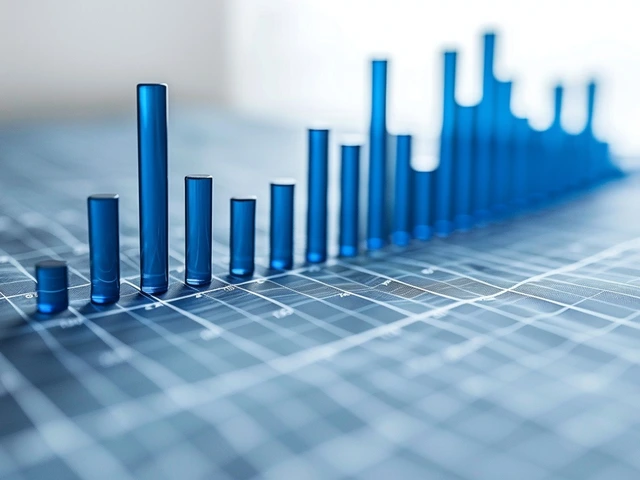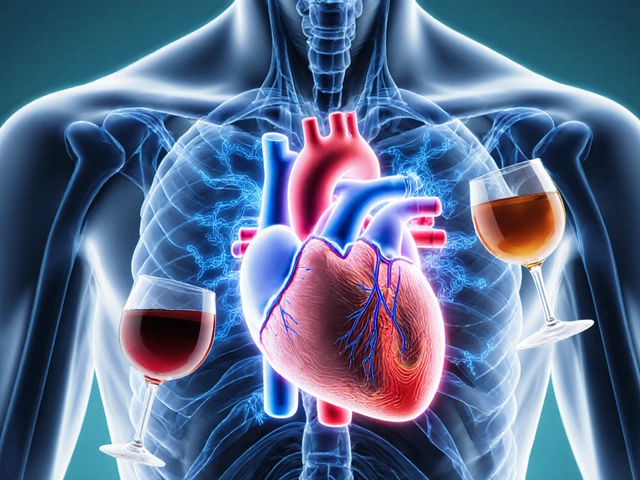
Medication Cost & Safety Calculator
Compare Your Medication Costs
Your Results
Enter your medication details to see your potential savings
Did you know? The TGA requires generics to meet the same strict standards as brand-name drugs with identical active ingredients and absorption rates. Most patients report no difference in effectiveness or side effects.
PBS Safety Net Info
Once you reach the PBS Safety Net threshold, you pay a reduced co-payment: $8.30 (concession card holders) or $32.90 (others) per prescription.
Track your spending: every time you fill a script, check your PBS statement online to see how close you are to the cap.
Medications are essential - but they’re also one of the biggest drivers of healthcare costs. In Australia, prescription drug spending rose by 8.7% last year alone, and many patients are skipping doses or splitting pills just to make ends meet. The scary part? When people cut corners on meds, hospital readmissions go up, complications spike, and overall costs rise even more. The truth is, saving money on medications doesn’t mean risking safety. In fact, the safest approach is often the cheapest one - if you know where to look.
Pharmacists Are Your Secret Weapon
Most people think pharmacists just hand out pills. They’re wrong. Clinical pharmacists - the kind with board certification in pharmacotherapy - are the most underused tool in healthcare cost control. A study at Walter Reed Army Medical Center found that for every dollar spent on pharmacist-led medication reviews, hospitals saved $6.03. That’s not a guess. That’s real money saved by catching wrong doses, duplicate prescriptions, and dangerous drug interactions before they hurt someone.
In Sydney hospitals, teams that include pharmacists on daily rounds see 30% fewer medication errors. These aren’t just tech fixes. Pharmacists talk to doctors, ask patients what they’re actually taking at home, and spot when a $400 brand-name drug can be swapped for a $15 generic with the same effect. They don’t just cut costs - they prevent costly mistakes that lead to ER visits and long hospital stays.
Generic Drugs Are Safe - and Often Better
There’s a myth that generics are ‘weaker’ or ‘inferior.’ That’s not true. The Therapeutic Goods Administration (TGA) in Australia requires generics to meet the same strict standards as brand-name drugs. They must have the same active ingredient, strength, dosage form, and absorption rate. The only difference? Price. On average, generics cost 60-80% less.
Take metformin for diabetes. The brand name Glucophage costs around $120 for a 30-day supply. The generic? $18. Same pill. Same results. A 2023 TGA report found that 82% of Australian patients using generics reported no difference in effectiveness or side effects. And yet, many doctors still default to brands. Ask for the generic. If your doctor says no, ask why. Is it because it’s safer? Or because they’re used to prescribing it?
Mail-Order Pharmacies Save Time and Money
If you take the same meds every month - like blood pressure pills, thyroid meds, or antidepressants - mail-order pharmacies are a no-brainer. Most Australian private health funds offer mail-order options with 90-day supplies at a discount. You’ll pay less per pill, get free delivery, and avoid the hassle of monthly trips to the pharmacy.
One study showed patients using mail-order services saved an average of $280 a year on maintenance medications. Plus, fewer trips mean fewer chances for errors. No more rushing to the pharmacy at 6 p.m. because you ran out. No more getting the wrong dose because the pharmacist was swamped. Mail-order gives you consistency - and consistency is safety.
Use the PBS Safety Net
Australia’s Pharmaceutical Benefits Scheme (PBS) isn’t just about subsidizing drugs - it’s designed to protect you from high out-of-pocket costs. Once you hit the PBS Safety Net threshold in a calendar year, you pay a reduced co-payment for the rest of the year. For concession card holders, it’s $8.30 per script. For others, it’s $32.90.
But here’s the catch: you have to track your spending. Most people don’t. If you’re on multiple medications, keep a simple list: date, drug name, cost. Every time you fill a script, check your PBS statement online. Once you hit the cap, your scripts become much cheaper. It’s free money - if you know how to use it.
Don’t Skip Medication Reconciliation
When you’re admitted to hospital or discharged, someone should sit down with you and go over every single medication you’re taking. That’s called medication reconciliation. It’s not optional. It’s a national patient safety goal.
Here’s what happens without it: a patient gets discharged with 12 meds. The GP thinks they’re on 8. The pharmacy doesn’t know about the new one. The patient forgets one. Result? A dangerous interaction. A hospital readmission. A $15,000 bill.
Ask for a full med review before leaving the hospital. Bring your own list - not the one the hospital thinks you’re on. Write down names, doses, and why you’re taking each one. If you’re unsure, ask the pharmacist. This one step cuts readmission risk by nearly 30%.
Antibiotics? Don’t Rush. Don’t Waste.
Antibiotics are powerful - and expensive. But they’re also overused. A 2023 study in Melbourne hospitals found that 28% of antibiotic prescriptions were unnecessary. That’s not just wasteful - it’s dangerous. Misuse leads to resistant infections, which cost the Australian healthcare system over $1 billion a year.
Smart hospitals use antimicrobial stewardship programs. That means: only use antibiotics when needed. Switch from IV to oral as soon as possible. Stop them when the infection is gone - don’t finish the whole pack if you feel better. One hospital in Adelaide saved $2 million a year just by changing how they prescribed antibiotics. That’s not magic. That’s clinical judgment.

Technology Helps - But Only If People Are Involved
Barcode scanners, electronic prescribing, and automated dispensing machines sound like the future. And they are. But they’re not magic bullets. A hospital in Brisbane installed a new barcode system and thought errors would drop. They didn’t - until they added pharmacists to check each alert. The tech flagged 150 potential errors a week. Pharmacists reviewed them. 120 were false alarms. 30 were real. Those 30 prevented harm.
Technology reduces errors by about 55%. Human oversight boosts that to 85%. The best systems combine both. Don’t assume a digital system alone will keep you safe. Make sure a trained pharmacist is part of the process.
What Not to Do
Some hospitals tried cutting costs by reducing pharmacy staff. One in Queensland cut four pharmacy tech positions to save $300,000 a year. Three months later, medication errors jumped 22%. Extended stays and legal claims cost them $1.2 million. That’s not saving money. That’s losing it.
Another common mistake: switching to cheaper drugs without checking therapeutic equivalence. A patient on warfarin was switched to a different generic. Their INR levels went wild. They ended up in the ER with a bleed. The drug was technically ‘bioequivalent’ - but the fillers and coatings affected absorption. That’s why TGA and the FDA require strict testing. Always ask: is this switch approved for my condition?
What You Can Do Today
- Ask your doctor: ‘Is there a generic version of this?’
- Sign up for mail-order if you take long-term meds.
- Track your PBS spending. You might be close to the safety net.
- Bring a list of all your meds to every appointment - including supplements and OTC drugs.
- Ask for a medication review when you’re discharged from hospital.
- Don’t hoard old prescriptions. Return unused meds to the pharmacy for safe disposal.
Medication safety isn’t about spending more. It’s about spending smarter. The cheapest option isn’t always the one with the lowest sticker price. Sometimes, the safest option - a pharmacist’s time, a generic pill, a well-timed review - is the one that saves you the most in the long run.
Are generic medications really as safe as brand-name drugs?
Yes. In Australia, all generic medications must meet strict standards set by the Therapeutic Goods Administration (TGA). They must contain the same active ingredient, in the same strength and dosage form, and be absorbed into the body at the same rate as the brand-name version. Most patients report no difference in effectiveness or side effects. Generics are tested for bioequivalence before approval.
How can I save money on my prescriptions without risking my health?
Use the PBS Safety Net to cap your out-of-pocket costs. Ask for generic versions. Consider mail-order pharmacies for maintenance medications. Always review your meds with a pharmacist - especially after hospital discharge. Never skip doses or split pills without professional advice. These steps cut costs without cutting corners on safety.
Do pharmacist-led programs really save money?
Yes. Studies show pharmacist-led interventions save $2,000-$5,000 per patient by preventing hospital readmissions and medication errors. One Australian hospital saved $1.8 million over 18 months by embedding pharmacists in discharge teams. For every dollar spent on these programs, healthcare systems save over $6 in avoided costs.
Can I use mail-order pharmacies for all my medications?
Mail-order works best for long-term, stable medications like those for high blood pressure, diabetes, or cholesterol. It’s not ideal for medications you take occasionally, need urgently, or that require refrigeration. Check with your pharmacist or health fund to see which drugs are eligible. Many private health funds offer discounts for 90-day supplies through mail-order.
What should I do if I can’t afford my medication?
Talk to your doctor or pharmacist. They may be able to switch you to a cheaper alternative, apply for patient assistance programs, or help you access free samples. Don’t skip doses or cut pills - that can be dangerous. There are legal, safe ways to reduce costs. Ask for help - you’re not alone.
11 Comments
Write a comment
More Articles

Kinetin Supplement: The Science Behind the Revolutionary Anti‑Aging Boost
Explore how kinetin works as a dietary supplement, its scientific backing, benefits, safety, and how it stacks up against other anti‑aging compounds.

AstraZeneca Seroquel Sales Soar in 2021 as Revenue Peaks
AstraZeneca's financial performance has been notably punctuated by the success of Seroquel, its flagship product, securing a top revenue spot in 2021 with impressive growth outlined in their recent report. This shift underscores pivotal dynamics within the pharmaceutical industry, as AstraZeneca navigates through acquisitions, legal settlements, and expands its sustainability strategies under new leadership.


Arup Kuri
November 24, 2025 AT 23:46So now we're supposed to trust pharmacists more than doctors? LOL. I've seen what happens when you let pill-pushing clerks make medical calls. One guy in my town got prescribed insulin because some pharmacist thought his sugar was high. He ended up in a coma. Trust the system? Nah. The system is rigged to make Big Pharma rich and you dumb